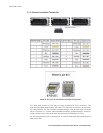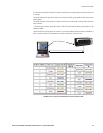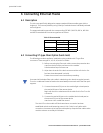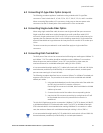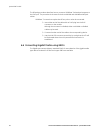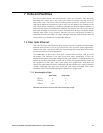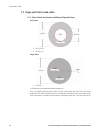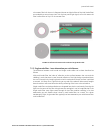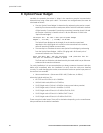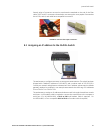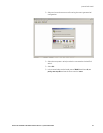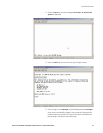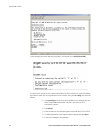
26 MULTILINK ETHERNET COMMUNICATIONS SWITCH – QUICKSTART GUIDE
QUICKSTART GUIDE
8 Optical Power Budget
Inevitably the question that arises is “What is the maximum practical communication
distance when using a fiber optic cable?”. The answer isn’t straightforward, but must be
calculated as follows:
• First the "Optical Power Budget" is determined by subtracting the receiver’s rated
sensitivity from the transmitter’s rated power, both of which are defined in decibels
of light intensity. For example if a particular transmitter is rated at minus15 db and
the receiver’s sensitivity is rated at minus 31 db, the difference of 16 db is the
"Optical Power Budget."
Xmt Output Pwr - Rcv Sens = OPB: Optical power budget
Magnum: ( -15.0 dB ) - (- 31.0dB)= -16 dB OPB
The Optical Power Budget can be thought of as the maximum permitted
attenuation of the light signal as it travels from the transmitter to the receiver,
while still permitting reliable communication.
• The next step is to calculate the worst case Optical Power Budget by subtracting
from the Optical Power Budget, 1 dB for LED aging and 1 dB for each pair of
connectors (referred to as "insertion loss").
Worst Case OPB = OPB - 1dB (for LED aging) – 1dB (insertion loss for
each pair of connectors) x number of pairs
The final step is to divide the calculated result by the rated cable loss per kilometer
to determine the maximum distance.
For costly installations it is recommended that you always measure the actual cable loss
before and immediately after the installation to verify that the cable was installed
correctly. To avoid damaging the receiver, ensure that the maximum optical input power of
the receiver isn’t exceeded.
• Worst case distance = {Worst case OPB, in dB} / [Cable Loss, in dB/Km]
where the “typical cable loss” for:
• 62.5/125 and 50/125ìm (M.m) is 2.8 dB/km
• 100/140 (Multi-mode, 850nm) is 3.3 dB/km,
• 9/125 (Single-mode, 1310nm) is 0.5 dB/km (a worst case industry number)
• 9/125 (Single-mode, 1310nm) is 0.4 dB/km ( LXSC25)
• 9/125 (Single-mode 1550nm) is 0.25 dB/km (ZXSC40, SSCX)
• 9/125 (Single-mode 1550nm) is 0.2 dB/km (ZXSC70) and
• 9/125 (Single-mode 1550nm) is 0.22 dB/km (ZXSC120)
These are typical cable losses. There will be deviations depending on the manufacturer.
Always measure the loss before installation.



